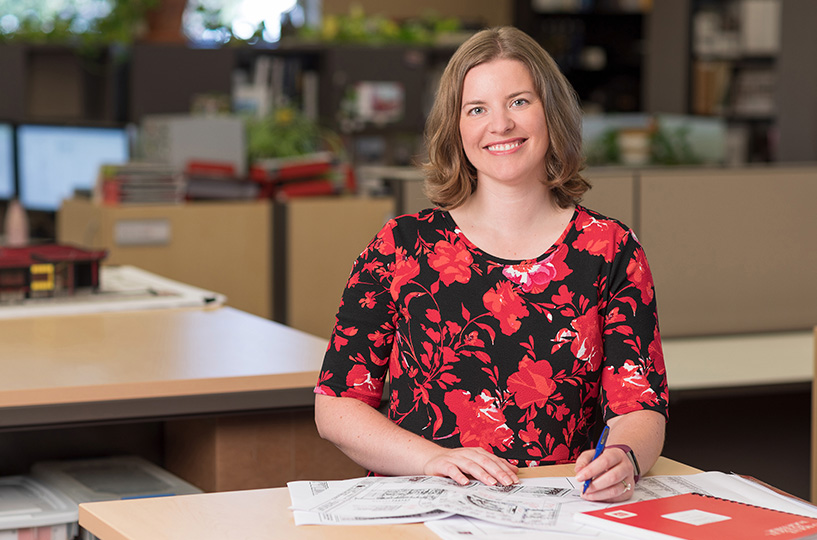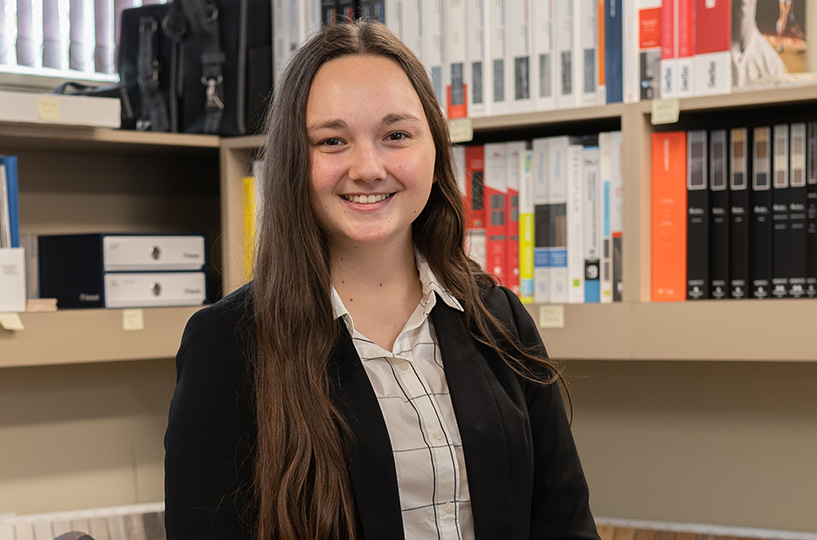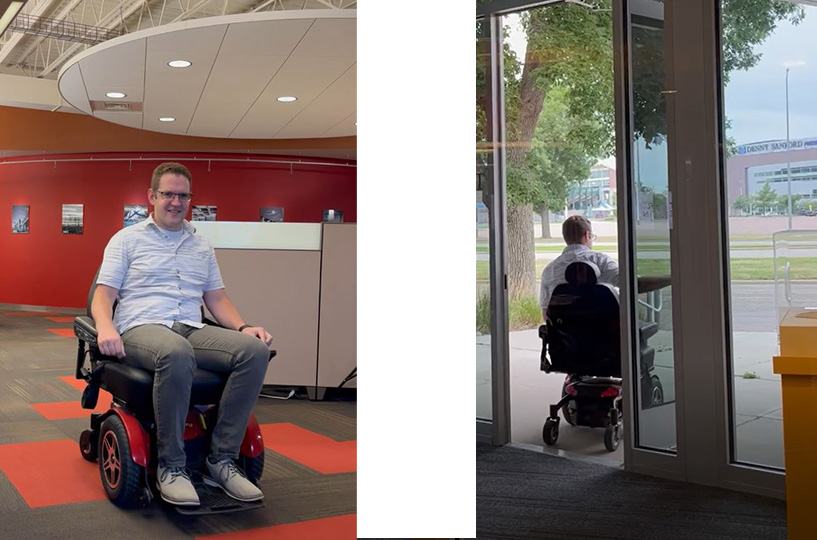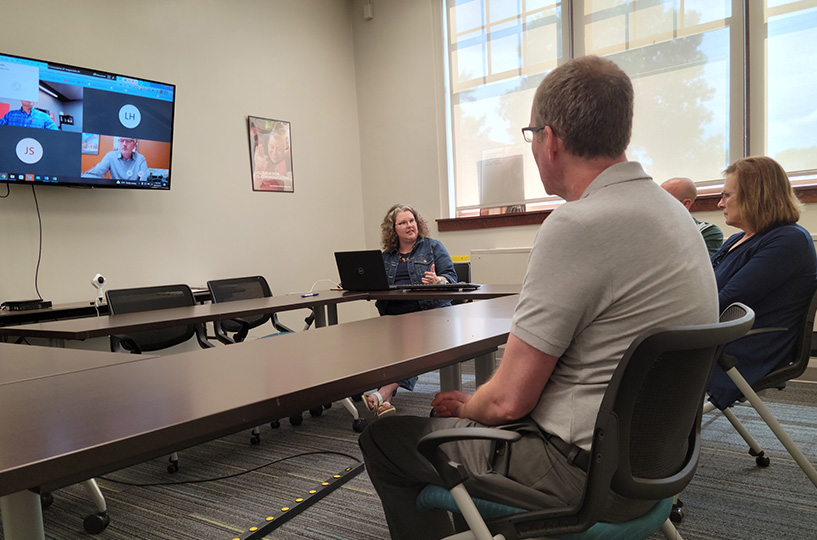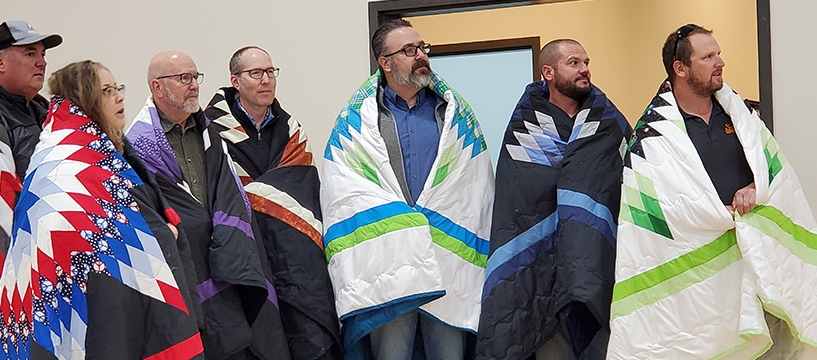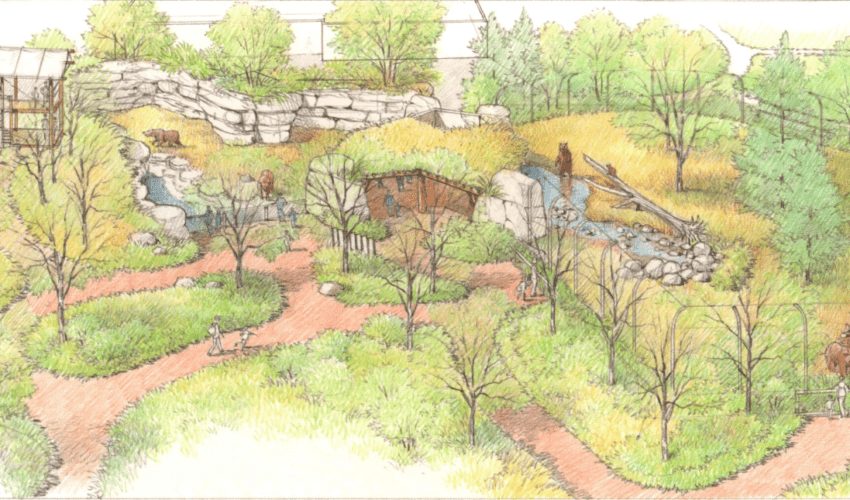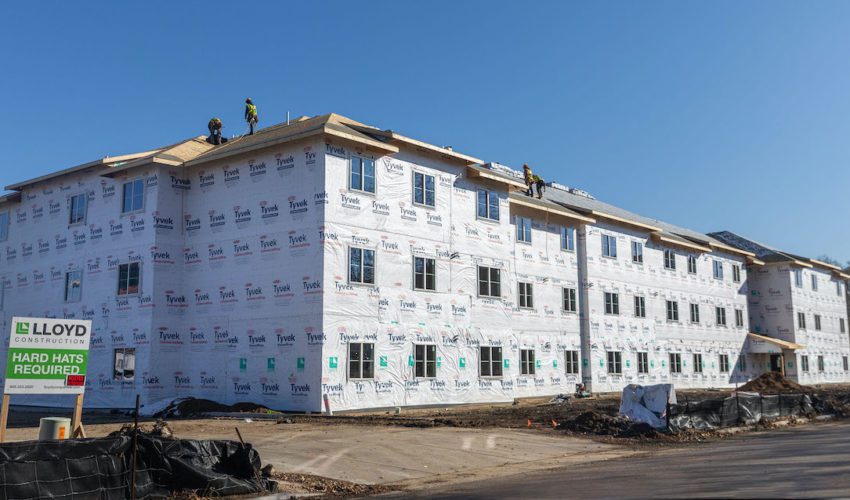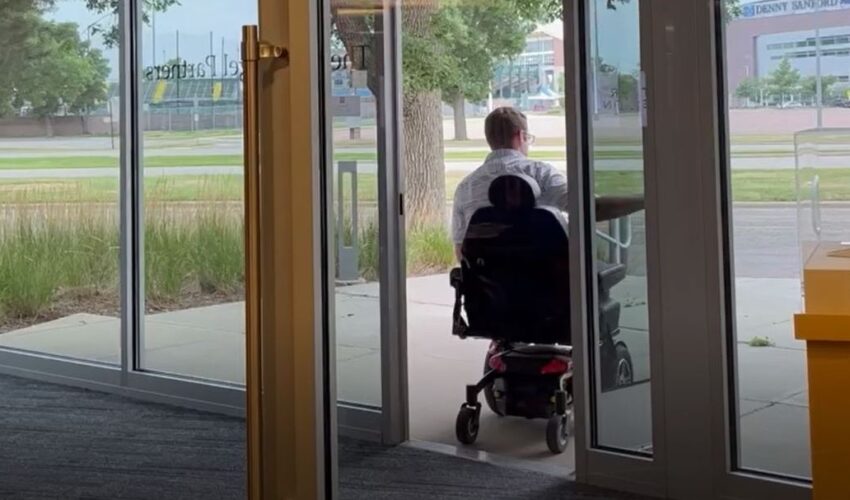Exercise in empathy helps TSP better understand importance of accessible building design
Oct. 5, 2022
This paid piece is sponsored by TSP.
An intentional effort to put oneself in the shoes of others, if only for a short time, is helping TSP team members increase their awareness of the challenges some people face when navigating built environments.
TSP principal and senior architect Michelle Klobassa had been mulling over an idea and contacted DakotAbilities, which provides services to individuals with developmental disabilities.
After a conversation with DakotAbilities director of development Jennifer Smith Hoesing, a manual wheelchair and a powered wheelchair were delivered to the TSP office.
Klobassa thought it would be a valuable experience for TSP team members to gain first-person perspective on how using a wheelchair impacts a person’s experience in a building.
“My goal was to help us be more thoughtful when we’re designing in the future and also help our clients end up with facilities that function better for a broader spectrum of people,” she said. “We have always designed with accessibility in mind, but it sticks with you more after you wheel yourself around.”
Those who took part report unanimously that using a wheelchair in the office is not easy.
“I was really surprised by the challenge of navigating through a typical 36-inch-wide door,” Klobassa said. “That width is a standard architectural door dimension, and it meets accessibility guidelines, but it felt really narrow when you’re trying to get through it in a wheelchair without scraping your hands.”
For interior designer Emma Velde, the initial excitement of what she thought would be a fun experiment quickly gave way to reality.
“I struggled to maneuver corners, open doors, and it especially seemed impossible to reach things that I grab on a daily basis,” she said. “As a designer, I have known about these issues for some time, but it isn’t until you truly experience them that you can see the importance of an inclusive design. There are many people who must face these challenges in a world not built for them, and I am thankful TSP brings these topics up and challenges us to design for everyone.”
Doors were a struggle for architect Chase Kramer, who is TSP’s director of design.
“Even in the motorized wheelchair, I found myself struggling to maneuver properly at doors, simultaneously trying to open the door and control the wheelchair at the same time,” he said. “I found myself wishing for those automatic push buttons everywhere.”
From his experience navigating TSP’s ADA-accessible ramp at the front of the building, Kramer also thinks ramps could be challenging, if not frightening, especially during the winter.
After TSP staff had time to try the wheelchairs, some of them visited DakotAbilities’ Longfellow Center in Sioux Falls for a follow-up discussion of best practices in accessible building design.
DakotAbilities executive director Nathan Stallinga commended the group for taking the time and effort to consider the needs of people who use wheelchairs.
That meeting, available to a companywide TSP audience, was a chance to share the experience of using the wheelchairs and learn more about how DakotAbilities makes its buildings more usable for clients.
Those efforts in functionality include 42-inch doorways kept free of congestion and the use of durable materials such as cement board and stone countertop.
The discussion also focused on automatic sliding or swinging doors.
“They are a good item to consider to make access easier, but it’s really important to think about the location of the push buttons, the timing of how long the doors remain open and the direction of the wind, which can create problems,” Klobassa said.
Access to the wheelchairs and conversations with DakotAbilities provided an opportunity to be more thoughtful and intentional when considering building design.
“We don’t always think about these different limitations and how that actually affects a space,” said TSP architectural graduate Bret Holt, who found it eye-opening to see the amount of circulation space that is needed at DakotAbilities.
“It’s a completely different experience, but it helps you be more mindful,” he said.
Klobassa predicts the experience will lead to more discussions about accessibility, adding that the sharing of lessons learned will inspire successful building design for people of all abilities.
Kramer found the experience valuable because it increases empathy.
“I now have better first-hand knowledge of how door operation and clearances work while using a wheelchair and will allow that to inform my understanding and design of entry sequences into buildings.”
Velde appreciates the recent chance to test-ride the wheelchairs and looks forward to similar experiences that can change the way people think about a space.
“It may take more thought and conversation on the design end, but we can truly change lives with good design,” she said. “I want to help people feel comfortable in any space they enter, and opportunities like the one we had is just one of many ways we can gain the perspective of others.”

